45 reading nutrition facts labels
Food Labels | CDC - Centers for Disease Control and Prevention If you eat the whole thing, you are eating 8 times the amount of calories, carbs, fat, etc., shown on the label. Total Carbohydrate shows you types of carbs in the food, including sugar and fiber. Choose foods with more fiber, vitamins, and minerals. Choose foods with lower calories, saturated fat, sodium, and added sugars. PDF MOVE! Nutrition Handout N10: How to Read a Nutrition Facts Label size" is the official term used on food labels. Nutrition facts given on the food label are based on one serving. Be sure to look at the number of servings in the container. Even small containers may have more than one serving. If you eat the whole container, then you must multiply the nutrition values by the number of servings in the ...
How to Read Nutrition Facts | Food Labels Made Easy - YouTube Finally, on some labels you will see the calories per gram for each macronutrient. Fat contains 9 grams per serving and Carbohydrates and Proteins contain 4. So for every 10 grams of fat, you will...

Reading nutrition facts labels
Quick Tips for Reading the Nutrition Facts Label - Food and Drug ... Quick Tips for Reading the Nutrition Facts Label Use Percent Daily Value (%DV) as a guide. The %DV shows how much a nutrient in a serving of the food contributes to a total daily diet. As a general... › article › take-our-nutrition-factsTake our Nutrition Facts quiz! | Center for Science in the ... May 29, 2022 · Since the 1990s, Nutrition Facts and ingredients have been required on nearly all packaged food labels. But who has time to carefully scour each label on the shelf? And it’s easy to be tricked by buzzwords that make a food sound higher—or lower—in something than it is. Here’s a quick quiz to see if you can guess which food from each pair has more of a nutrient or ingredient (or if it's ... How to Read Everything on the Nutrition Facts Label - Food Network This carries over to all the other nutrients on the label. If 1 serving of a food has 120 mg of sodium, it can technically be labeled as a "low sodium" food. However, if you eat 3 servings, triple...
Reading nutrition facts labels. How to read nutrition labels - Newspostalk - Global News Platfrom Percent Daily Worth. The Daily Worths (DV) are referral quantities that inform you if one offering of a food includes a little or a great deal of that nutrient. A basic standard when checking out percent everyday worths is that if an offering of food supplies 5% DV or much less of a nutrient, that food is thought about reduced because nutrient ... How To Read Nutrition Labels - Mayo Clinic Diet All the nutrition info — including calories — refer to the amount in one serving. 2. Check the calories in one serving 40 calories is low, 100 calories is moderate, 400 calories or more is high. Remember: If you eat multiple servings, you'll need to multiply the calories by the number of serving that you eat. 3. Check the % Daily Value medlineplus.gov › ency › patientinstructionsFacts about monounsaturated fats: MedlinePlus Medical ... May 26, 2020 · All packaged foods have a nutrition label that includes fat content. Reading food labels can help you keep track of how much fat you eat. Check the total fat in one serving. Be sure to add up the number of servings you will eat in one sitting. Look closely at the amount of saturated fat and trans fat in a serving. The rest is unsaturated fat. Learning To Read Labels :: Diabetes Education Online The "Nutrition Facts Label" is found on the outside of the container. To count carbohydrates, look at three things: Serving Size Number of Servings Per Container Grams of Total Carbohydrate per serving The total carbohydrate tells how many grams of carbohydrate are in one serving. Be careful when reading the label.
How to read nutrition facts on food labels? The Nutrition Facts label's Percent Daily Value (DV) is a guide to the nutrients in one serving of food. For example, if the label says 15% calcium, it implies that one serving delivers 15% of your daily calcium requirement. The Daily Values (DVs) are calculated using a 2,000-calorie diet for healthy people. Learn How the Nutrition Facts Label Can Help You Improve Your Health Read the Nutrition Facts labels on your packaged food and drinks to keep track of sugars, fats, protein, and other nutrients. Most sodium we consume is from salt, and salt is commonly in processed foods. Read labels and choose the product with less sodium. Drink plain water instead of sugary beverages. 3 Ways to Read Nutrition Facts on Food Labels - wikiHow Life 4. Aim to consume under 60% of your daily value in sodium. 20% of your daily value in sodium (per serving) is considered high. This means that with 3 meals in a day, you should keep your sodium intake under 60%. If you can't, try to avoid exceeding 100% of your daily value (2,300 milligrams). › food › new-nutrition-facts-labelRead the Label Youth Outreach Materials | FDA Read the Label Youth Outreach materials challenge kids (ages 9 to 13) to look for and use the Nutrition Facts label on food and beverage packages. The materials include fun, easy tips and targeted...
How to Understand and Use the Nutrition Facts Label | FDA When looking at the Nutrition Facts label, first take a look at the number of servings in the package (servings per container) and the serving size. Serving sizes are standardized to make it easier... How to Read Food Labels: Your Complete Consumer Guide Details included on food labels are the nutritional composition of a food, as well as ingredients and their relative amounts. When relevant, they may also indicate important details about the food's quality, origin, processing, and method of preservation. With this information, the theory goes, you can make intentional decisions about what to buy. 6 Tips for Reading Nutrition Facts Labels - Ask The Scientists Check the Sugar and Find the Fiber. Fats aren't the only macronutrient that requires extra investigation. When you're reading nutrition facts labels, look at carbohydrates, but also note the sugar and fiber amount. Sugar is a simple carbohydrate. It has well-established ties to weight gain and can hide in foods that seem healthy. How to Read a Nutrition Facts Label | Everyday Health How to Read a Nutrition Facts Label First, know that, as the label itself states, the included nutritional info is based on a 2,000-calorie-a-day diet. Your personal nutritional needs may vary,...
How to Read Nutrition Facts Labels - Action for Healthy Kids Choosing foods that have smaller percentage Daily Value for saturated fat, added sugars and sodium. A small percentage or low amount of a specific nutrient is considered 5% DV or less. Choosing foods that have higher percentage Daily Value for vitamins, minerals and fiber. A higher percentage of a specific nutrient is considered 20% DV or more.
Food label reading guide | Nutrition Australia What to look for when reading food and drink labels (per 100g) Health Star Ratings The Health Star Rating is a front of pack labelling scheme which can be used to make healthier food choices at a glance. The rating range is from ½ - 5 stars and the more stars, the healthier the choice. Recommended minimum star ratings for food and drink categories
Sodium on the Nutrition Facts Label | FDA The Nutrition Facts Label is a handy tool you can use every day to see the amount of sodium in packaged foods and beverages and make informed dietary choices. FDA's education materials show you how!
Reading Food Labels | ADA - American Diabetes Association The Nutrition Facts labels on foods are really the key to making the best choices. We'll cover the basics so that these labels make shopping easier for you. Get started Understanding Carbs You've heard it all. From carb-free to low-carb, to whole and empty carbs, it's hard to know what it all means. Learn more Food & Blood Sugar
The New Nutrition Facts Label | FDA Visit the Interactive Nutrition Facts Label to explore the label, from top to bottom. This tool provides a detailed look at all the information listed on the Nutrition Facts label, helpful tips for...
› food › new-nutrition-facts-labelDaily Value on the New Nutrition and Supplement Facts Labels Feb 25, 2022 · The Nutrition and Supplement Facts labels ... is a handy reference guide for all the Daily Values that have been updated on the new Nutrition Facts and Supplement Facts labels. Continue reading to ...
How to Read a Nutrition Facts Label - The Family Meal Project 100 calories per serving is considered moderate400 calories per serving is considered high. 3. Look at the nutrition terms: The nutrition terms on the label are there to tell you more about some of the nutrients in the food item you are looking at. Calorie Free - less than 5 calories per serving. Low Calorie - 40 calories or less per serving.
PDF TO CARE 4 YOURSELF READING A NUTRITION FACTS LABEL - novoMEDLINK Potassium300mg 9% Protein 6g Total Carbohydrate18g Saturated Fat 0g Dietary Fiber 6g Vitamin A 0% Calcium 4% Folic Acid 0% Sugars 1g Trans Fat 0g Polyunsaturated Fat 0.5g Monounsaturated Fat 0.5g Vitamin C 0% Start here What you eat is important. But so is how much you eat. So start by looking here.
› health › food-nutrition8 Big Lies About Sugar We Should Unlearn - Healthline Apr 23, 2018 · Here’s a look at eight things even nutrition-savvy people may not realize about sugar — and what you should know about fitting it into your diet. 1. ‘All sugar is bad sugar.’
The Nutrition Facts Label: Look for It and Use It! | SNAP-Ed 2018. Read the Label Youth Outreach materials challenge kids (ages 9 to 13) to look for and use the Nutrition Facts label on food and beverage packages. The materials include fun, easy tips and targeted education to help make label reading a key component through which today's young people are equipped to achieve a healthy diet.
Use the Nutrition Facts Label - National Institutes of Health Get enough of these: potassium, fiber, vitamins A and C, calcium, and iron Use the Percent Daily Value (% DV) column when possible; 5% DV or less is low, 20% DV or more is high Visit the Smart Food Shopping page and learn how the label can help you choose foods lower in calories, fat, and added sugar to help maintain a healthy weight.
› food › nutritionThe Basics of the Nutrition Facts Label Mar 04, 2022 · The following is a quick guide to reading the Nutrition Facts label. Step 1: Start with the Serving Size. Look here for both the serving size (the amount people typically eat at one time) and the number of servings in the package. Compare your portion size (the amount you actually eat) to the serving size listed on the panel.
Understanding Food Nutrition Labels | American Heart Association Learn what to look for on the label. 1 - Start with the serving information at the top. This will tell you the size of a single serving and the total number of servings per container (package). 2 - Next, check total calories per serving and container.
› understanding-food-labelsUnderstanding food labels - Canada.ca Find information on food labels and how to understand them. Learn about nutrition facts tables, serving size, list of ingredients, % daily value and nutrition claims.
How To Read Food and Beverage Labels - National Institute on Aging How to read the Nutrition Facts label The U.S. Food and Drug Administration (FDA) requires a Nutrition Facts label on most packaged foods and beverages. At the top of the Nutrition Facts label, you will find the total number of servings in the container and the food or beverage's serving size.
How to Read Everything on the Nutrition Facts Label - Food Network This carries over to all the other nutrients on the label. If 1 serving of a food has 120 mg of sodium, it can technically be labeled as a "low sodium" food. However, if you eat 3 servings, triple...
› article › take-our-nutrition-factsTake our Nutrition Facts quiz! | Center for Science in the ... May 29, 2022 · Since the 1990s, Nutrition Facts and ingredients have been required on nearly all packaged food labels. But who has time to carefully scour each label on the shelf? And it’s easy to be tricked by buzzwords that make a food sound higher—or lower—in something than it is. Here’s a quick quiz to see if you can guess which food from each pair has more of a nutrient or ingredient (or if it's ...
Quick Tips for Reading the Nutrition Facts Label - Food and Drug ... Quick Tips for Reading the Nutrition Facts Label Use Percent Daily Value (%DV) as a guide. The %DV shows how much a nutrient in a serving of the food contributes to a total daily diet. As a general...

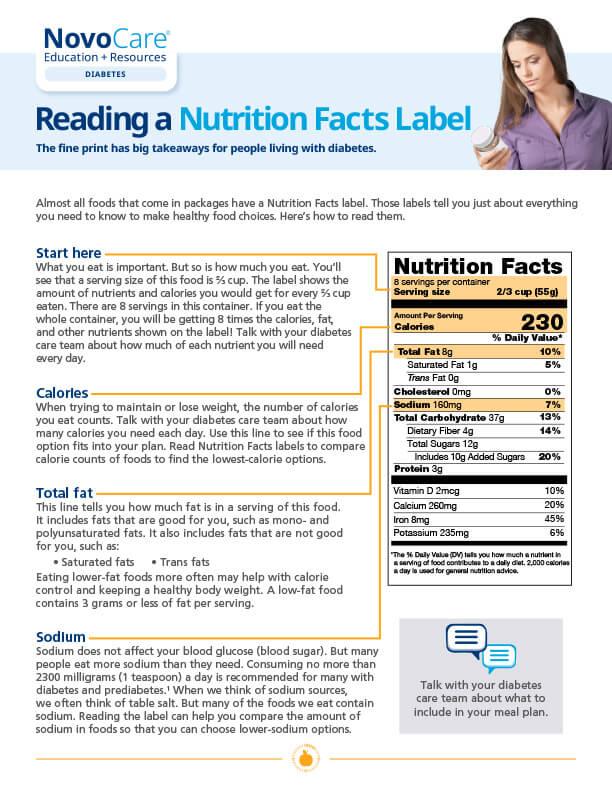
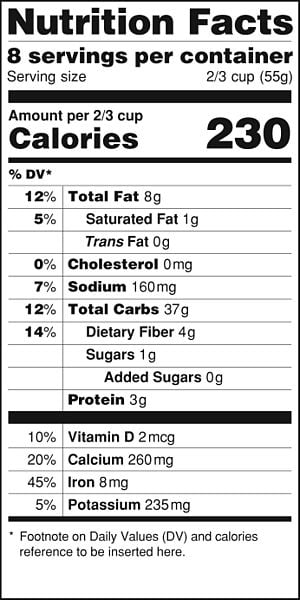


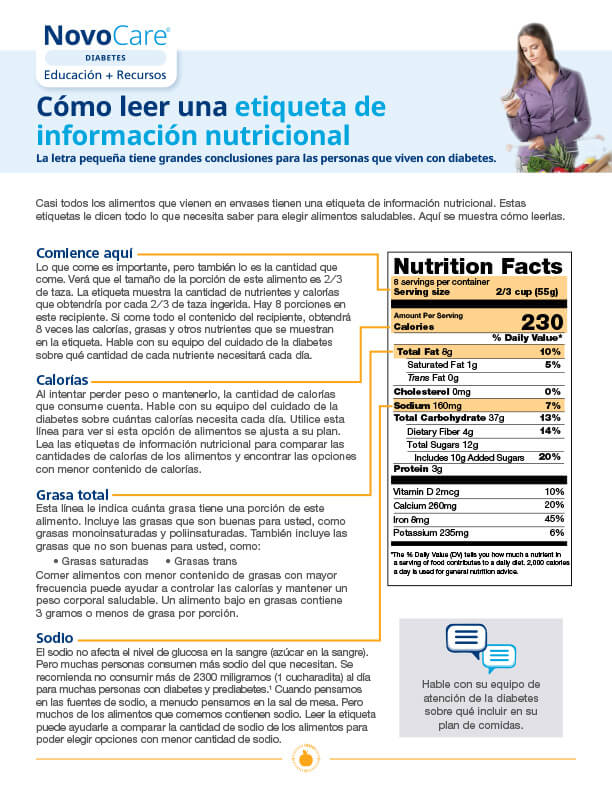
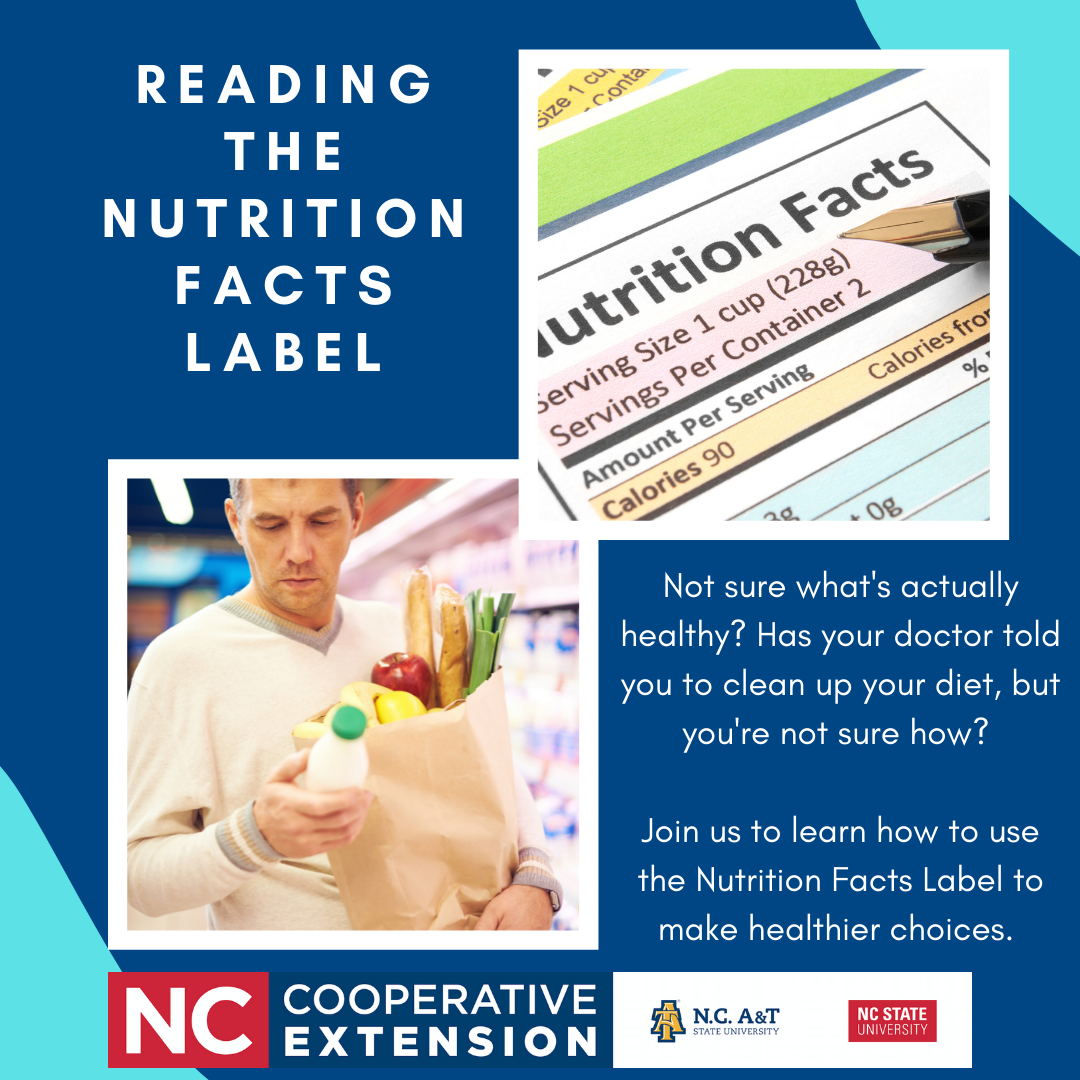
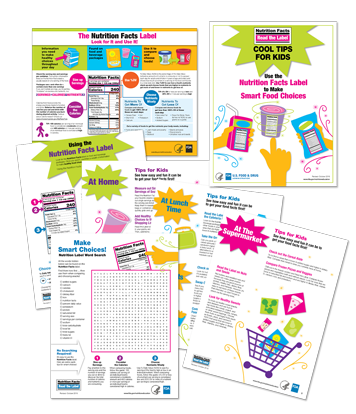
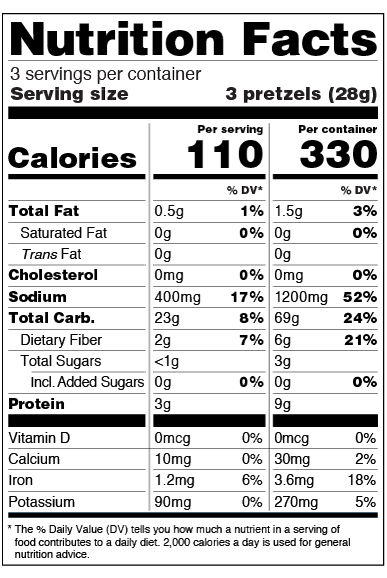
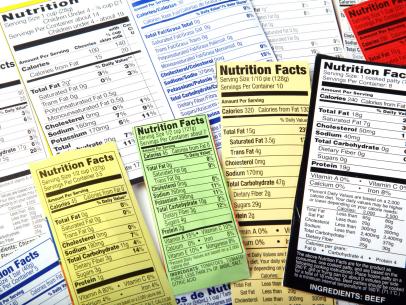
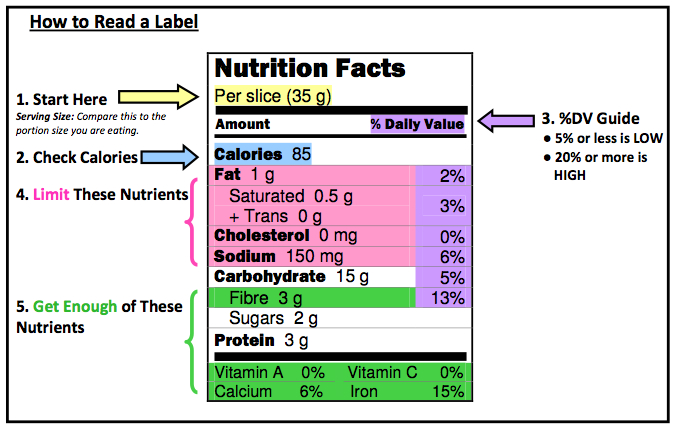
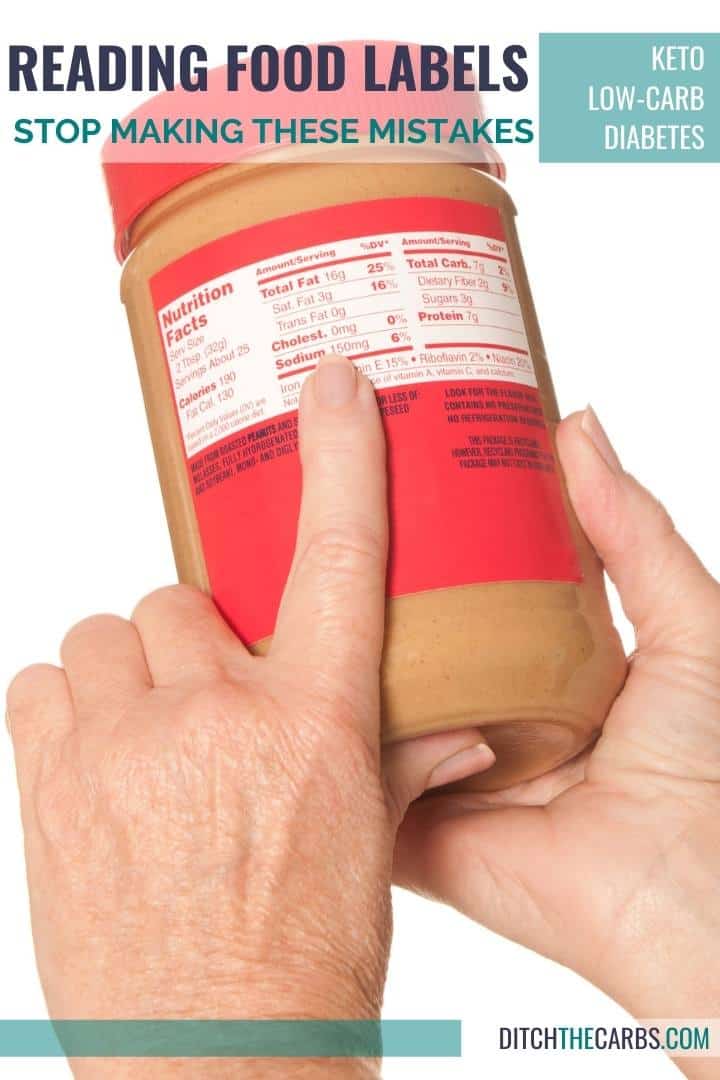
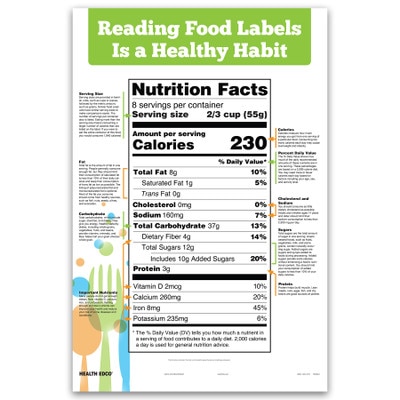
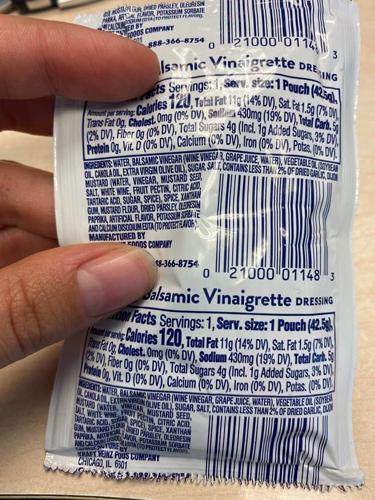



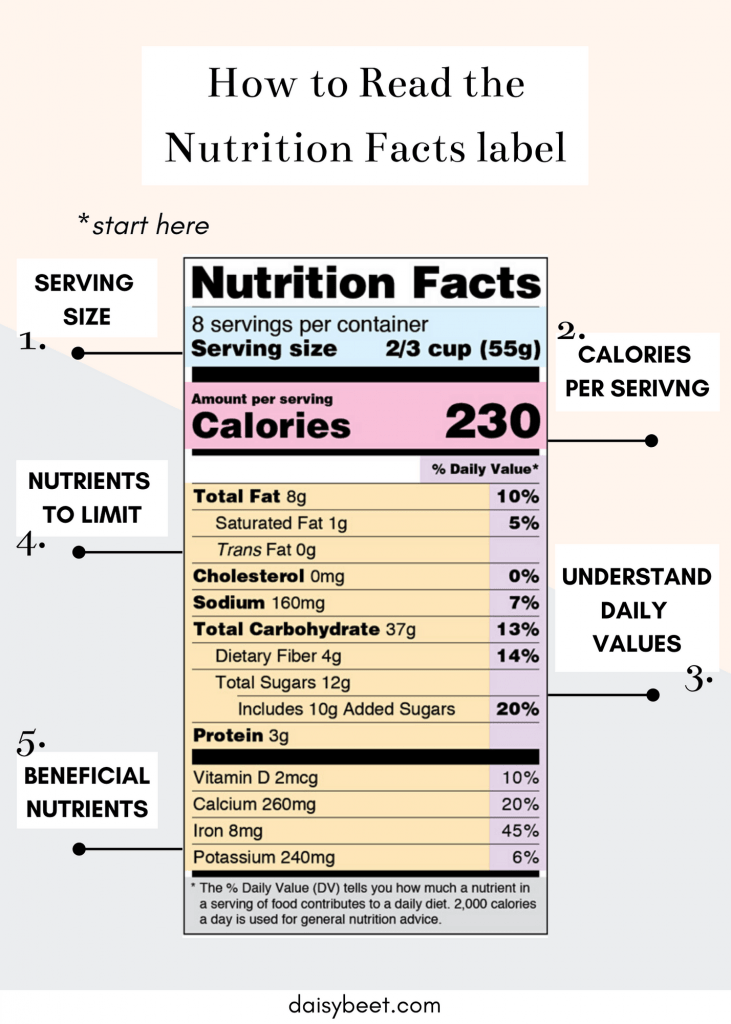

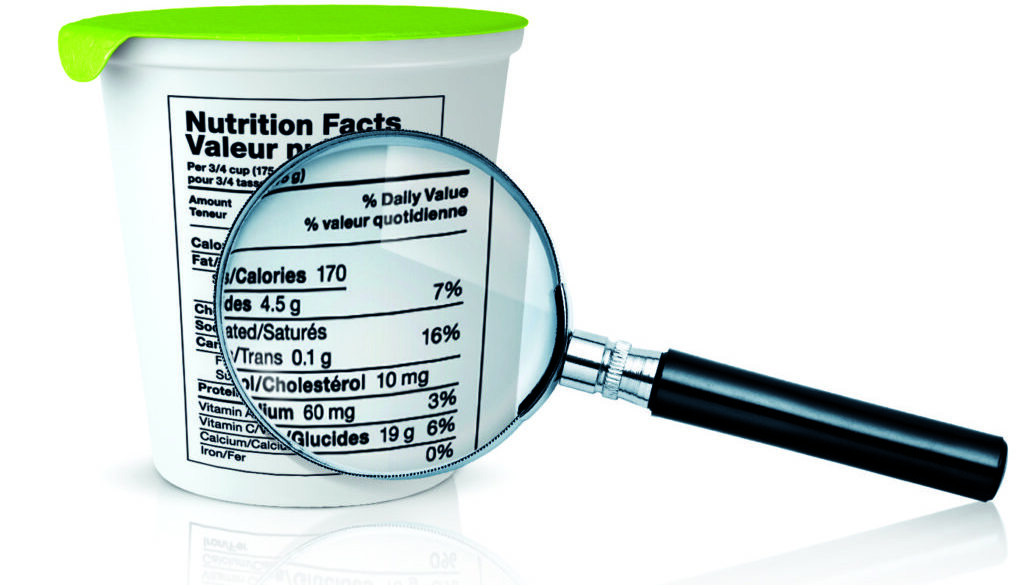
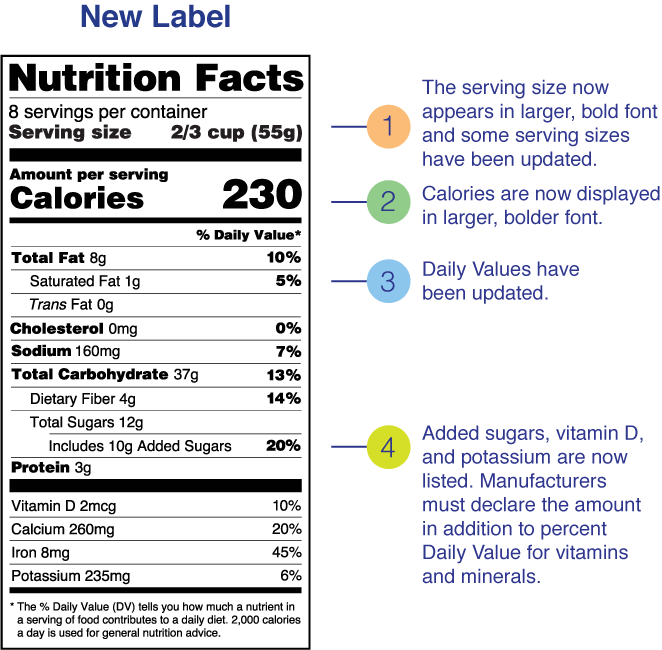



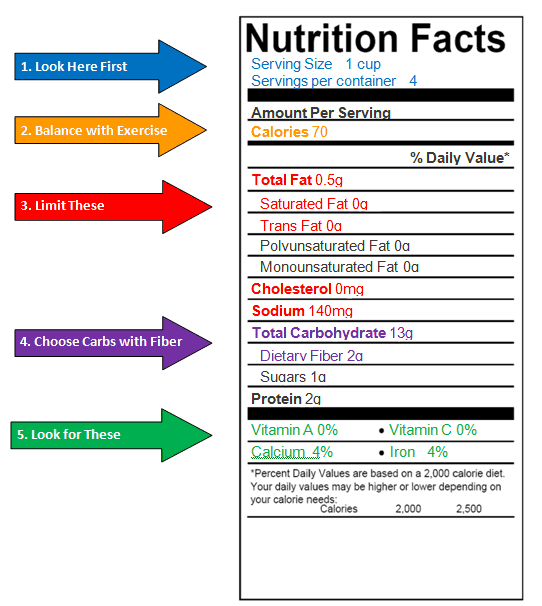

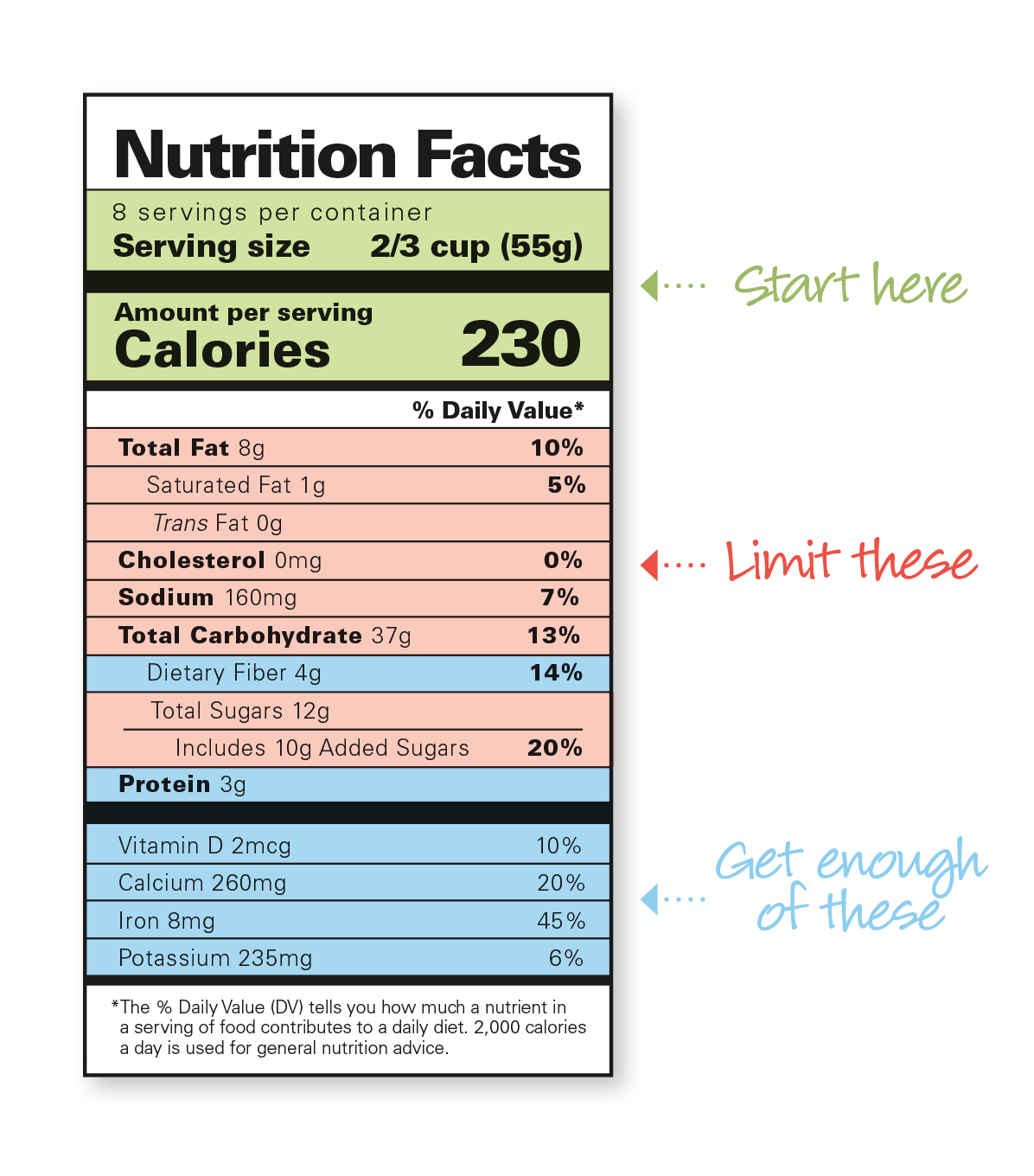

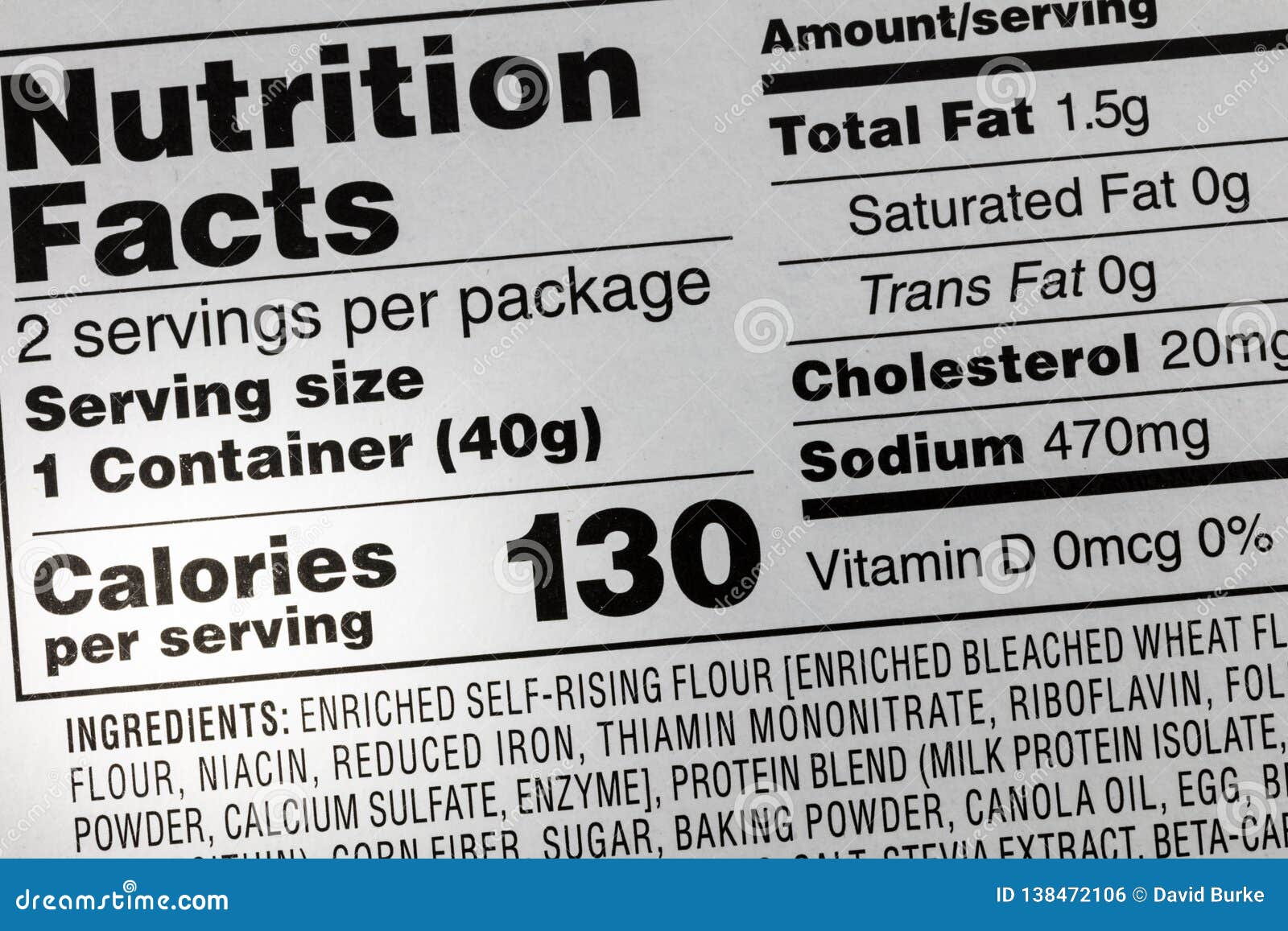



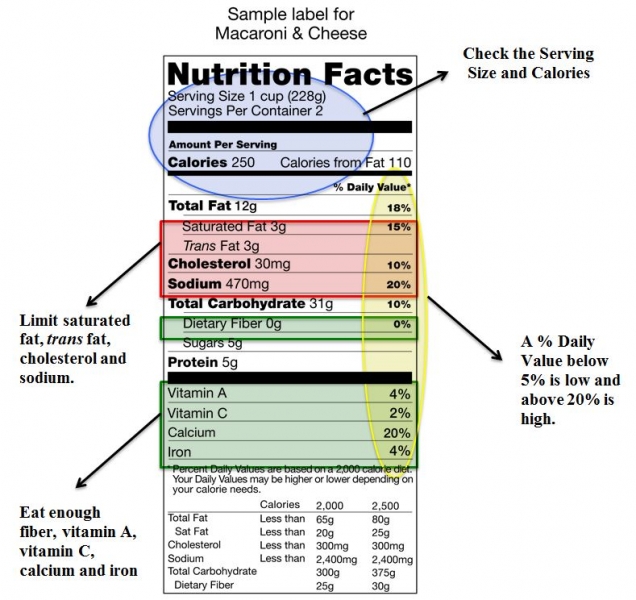

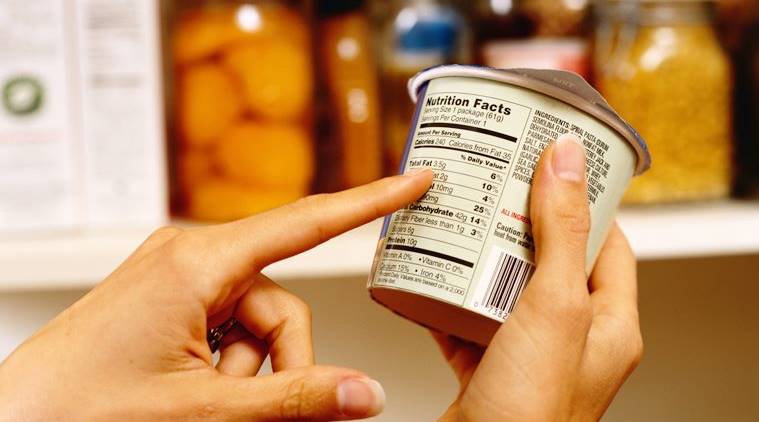
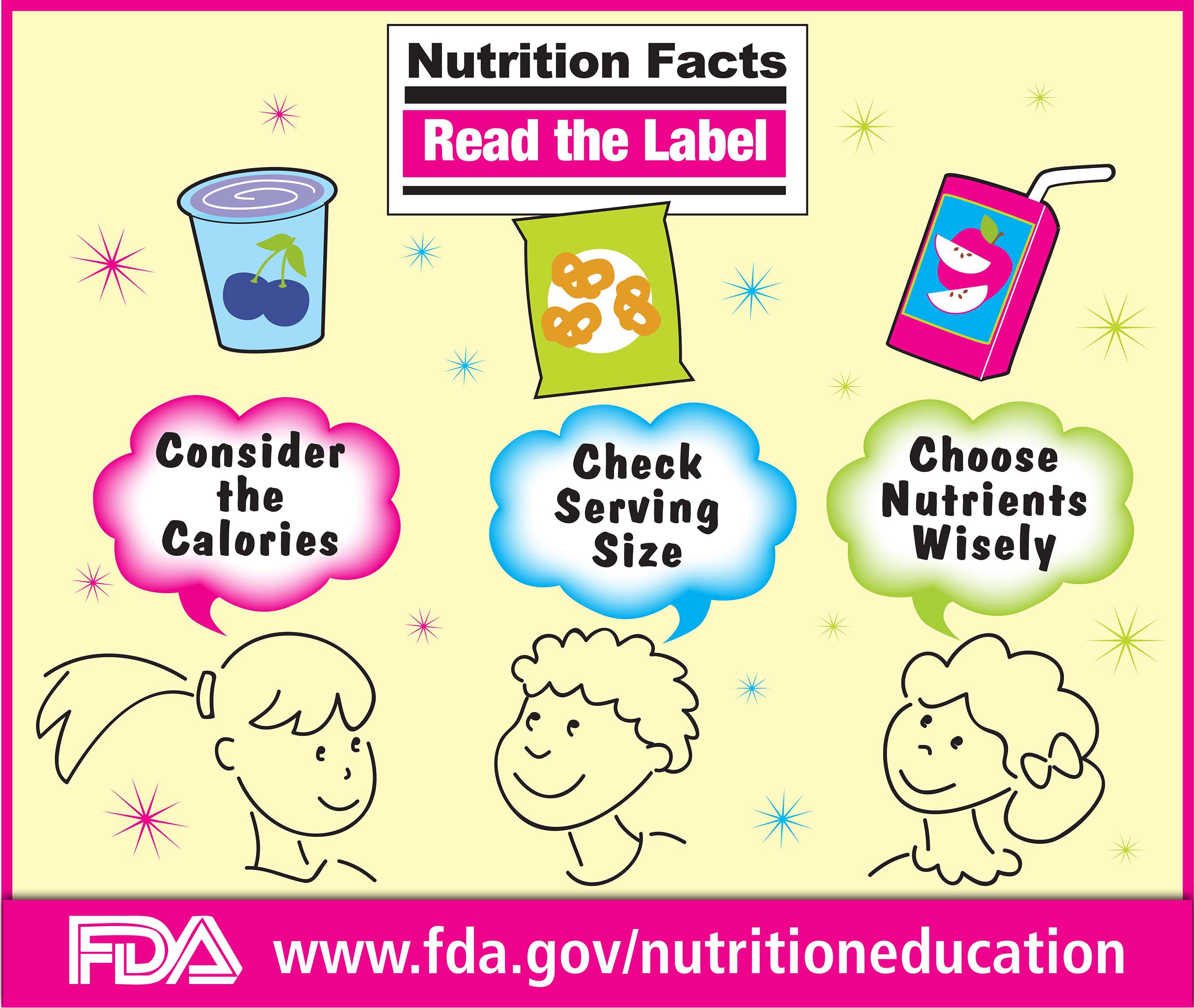
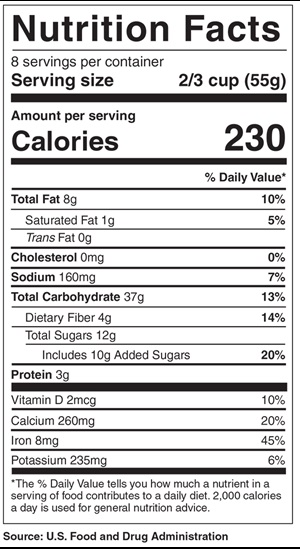

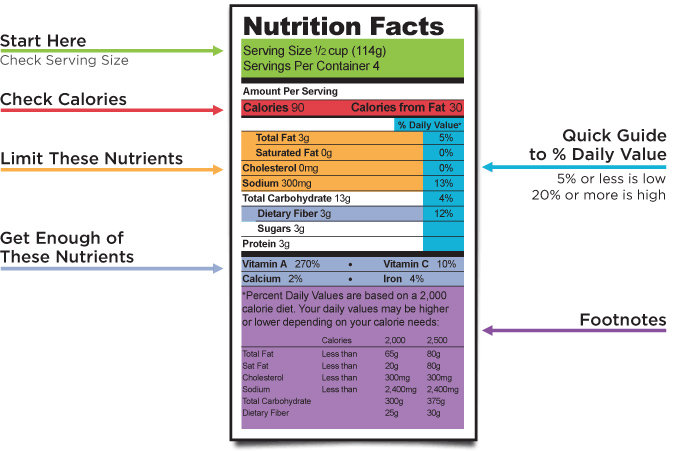
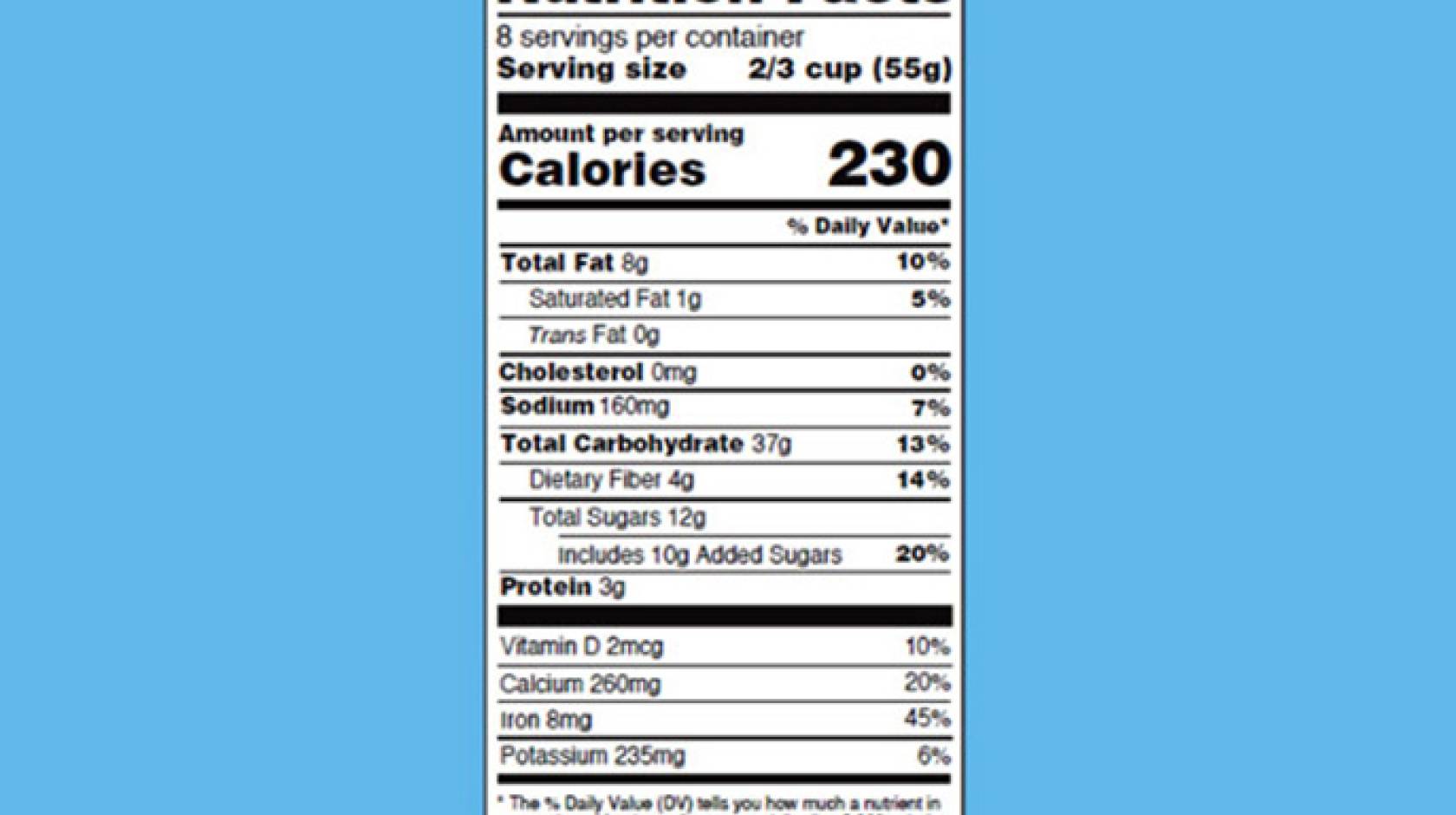

Post a Comment for "45 reading nutrition facts labels"